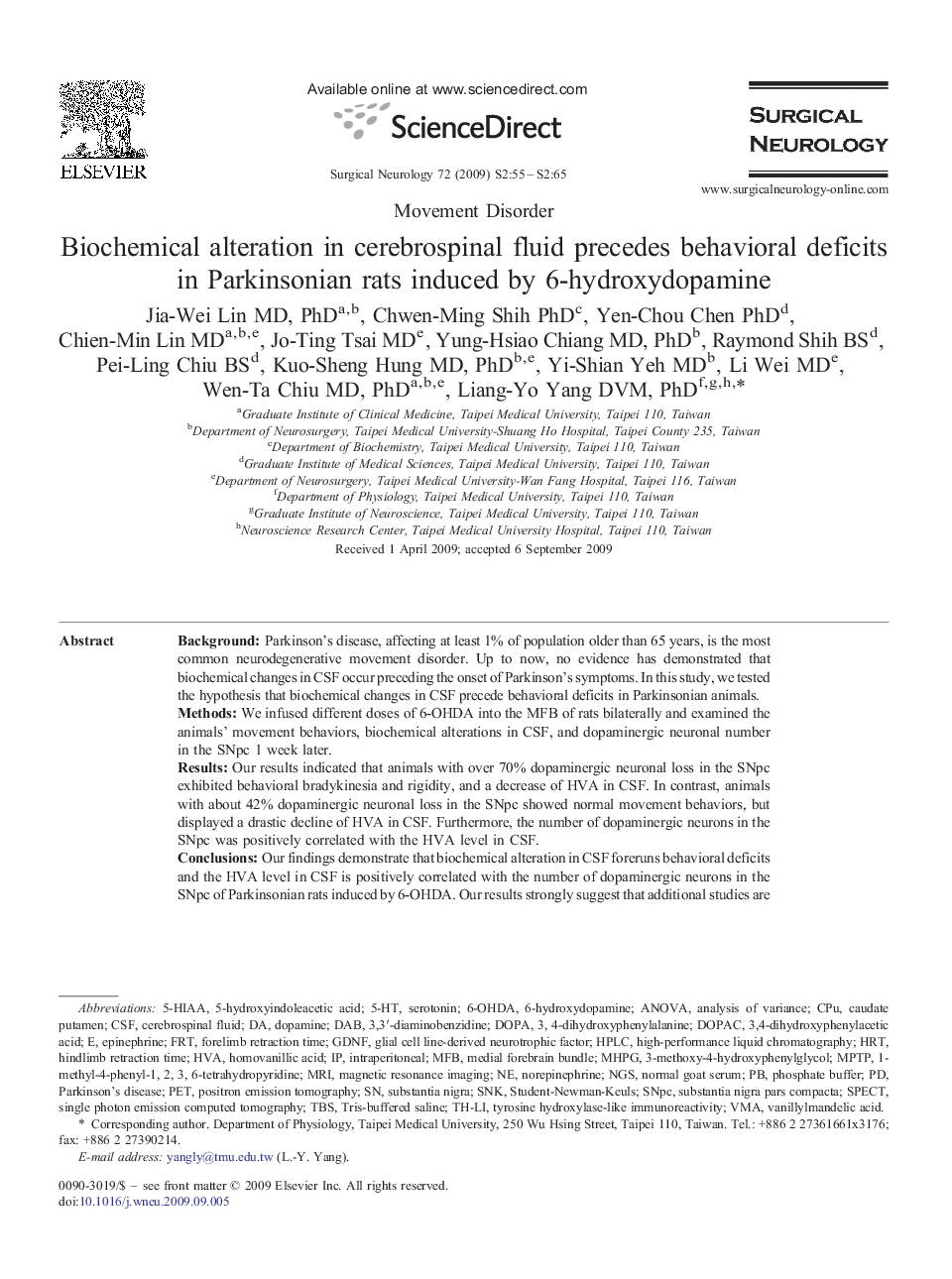| Article ID | Journal | Published Year | Pages | File Type |
|---|---|---|---|---|
| 3092175 | Surgical Neurology | 2009 | 11 Pages |
BackgroundParkinson's disease, affecting at least 1% of population older than 65 years, is the most common neurodegenerative movement disorder. Up to now, no evidence has demonstrated that biochemical changes in CSF occur preceding the onset of Parkinson's symptoms. In this study, we tested the hypothesis that biochemical changes in CSF precede behavioral deficits in Parkinsonian animals.MethodsWe infused different doses of 6-OHDA into the MFB of rats bilaterally and examined the animals' movement behaviors, biochemical alterations in CSF, and dopaminergic neuronal number in the SNpc 1 week later.ResultsOur results indicated that animals with over 70% dopaminergic neuronal loss in the SNpc exhibited behavioral bradykinesia and rigidity, and a decrease of HVA in CSF. In contrast, animals with about 42% dopaminergic neuronal loss in the SNpc showed normal movement behaviors, but displayed a drastic decline of HVA in CSF. Furthermore, the number of dopaminergic neurons in the SNpc was positively correlated with the HVA level in CSF.ConclusionsOur findings demonstrate that biochemical alteration in CSF foreruns behavioral deficits and the HVA level in CSF is positively correlated with the number of dopaminergic neurons in the SNpc of Parkinsonian rats induced by 6-OHDA. Our results strongly suggest that additional studies are needed to evaluate usefulness of monitoring the HVA level in CSF for early detection of the loss of dopaminergic neurons in the SNpc that precedes the onset of Parkinsonian symptoms in humans.
